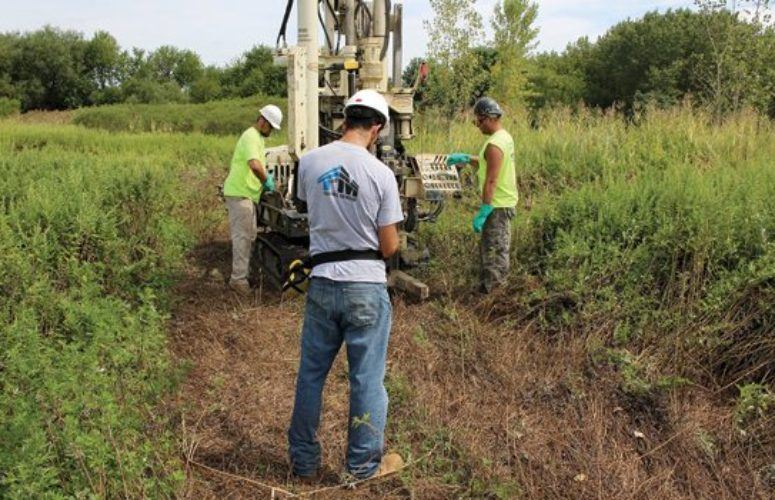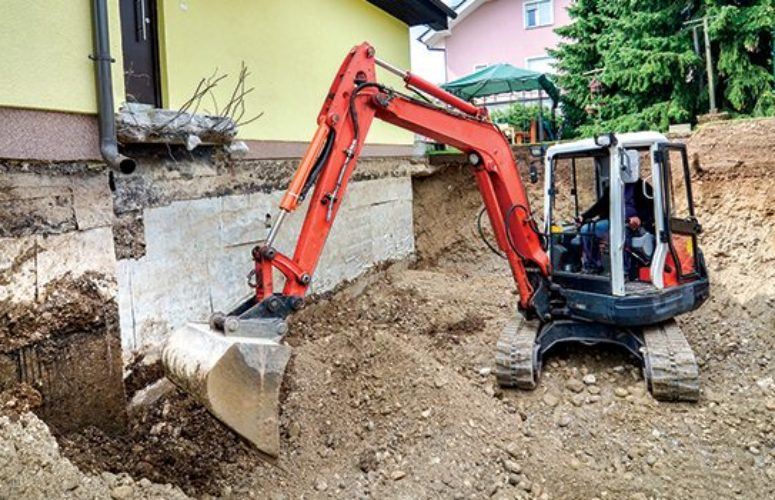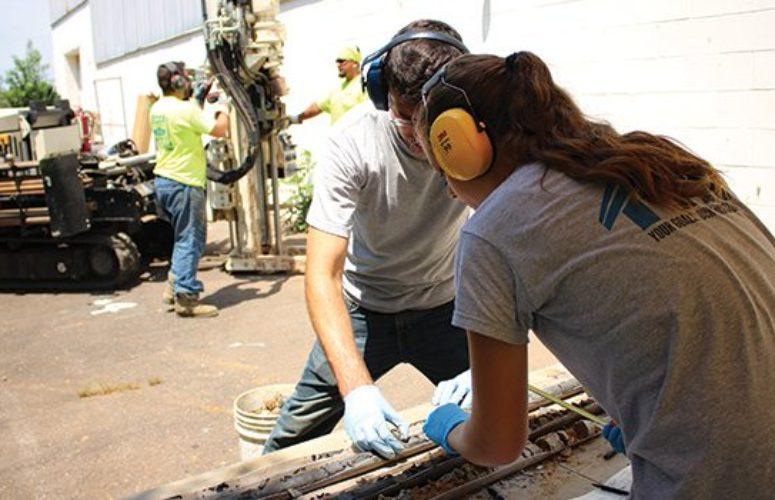
The Environment & the Economy
Environmental consultants see positive changes, more business.
By Colleen O’Dea, Contributing Writer On Nov 17, 2014Operating a successful business in New Jersey presents numerous challenges, not the least of which are a myriad of environmental regulations.
There are more than two dozen chapters within the environmental rules section of the New Jersey Administrative Code that may affect businesses. These include regulations covering air, land and water pollution, toxic chemicals, endangered plants and animals, underground storage tanks, noise control and the Highlands and the Pinelands, to name just a few.
This complex landscape that constantly changes with the drafting of new laws and regulations means smart businesses, large and small, rely on environmental consultants to help them in all stages of work – from ensuring new construction doesn’t encroach on wetlands or endangered species habitats to indoor air monitoring, to toxic materials cleanups. Some projects can be so complex that they require all of these services.
T&M Associates, based in Middletown, is consulting on a large redevelopment project in Jersey City. Canal Crossing was designed to transform a 111-acre area with large tracts of contaminated former industrial sites into a mixed-use community with affordable housing, modern infrastructure, greenways and a light rail stop. The site has 21 individual brownfield properties. The biggest problem is a large swath of land contaminated with hexavalent chromium, which can cause cancer, the result of years of chrome-production at the former PPG Industries site on Garfield Avenue. The NJ Department of Environmental Protection (DEP) estimates there are hundreds of thousands of tons of toxic waste and contaminated soil on the site. There are also wetlands. Canal Crossing has received federal housing and transportation funding and the DEP is involved in the remediation work.
“It was actually a very complicated, but rewarding, process,” says Jaclyn J. Flor, who served as manager for the initial study and design of the project for T&M. Perhaps most challenging is working to ensure that the cleanup is done in a way that ensures redevelopment can occur. “There are many solutions – they can just cap the site – but that would not help the surrounding community by creating jobs. … This is a great project; it benefits so many aspects of Jersey City.”
Benjamin Delisle, director of development at the Jersey City Redevelopment Agency, says the agency has retained T&M for two additional portions of the work: reviewing PPG’s environmental restoration work in light of the redevelopment plan and serving as a Licensed Site Remediation Professional (LSRP) for agency-owned brownfields within the district. Trying to handle all this without an environmental professional would not be possible, he says.
“T&M has such a great knowledge of our development plans,” Delisle adds.
“We had five different task managers,” Flor says. “Communications was very important with so many connected pieces. Every single piece of infrastructure is related to other aspects of the design.”
While this may be an extreme example, the character of urban New Jersey, in particular, makes it likely that most redevelopment efforts and business sales may need to include some form of environmental cleanup.
In the past, cleanups were under the control of DEP officials. But a few years ago, the state made a radical change in the rules allowing for private LSRPs to oversee projects and certify that they have been cleaned to meet all state standards. After a phase-in period and some expected bumps along the way, this program is a positive change that has streamlined the process and has left many with the view that the DEP has become more business-friendly.
“LSRP was a pretty monumental change in the way the state deals with contaminated sites,” says Frank S. Romeo, Jr., principal in Partner Engineering and Science Inc. of Eatontown. “There was so much coming into the DEP that it would create a bottleneck. Now, with the LSRPs, you have a little more freedom to move through the process. … It’s working pretty well.”
Under rules now fully in effect since 2012, a business, developer or municipality must hire an LSRP when: it takes over a remediation project; discovers or otherwise is liable for a discharge; must close a regulated storage tank; has to file a new deed notice or replace a declaration of environmental restrictions; or must comply with the Industrial Site Recovery Act (ISRA) on the selling or closing of a business.
Timothy Kinsella, company vice president and manager of the environmental group at T&M, calls the LSRP program a qualified success.
“The program has steadily matured throughout the last several years,” he says. “The continuous improvement philosophy adopted by the DEP is resulting in more clarity with respect to professional judgment decisions required by an LSRP. The increase in use and publication of guidance documents is certainly assisting in improving the dynamics of the program. Also, the outreach and improved on-line resources offered by the DEP have become invaluable to advance projects toward finality and closure.”
However, Kinsella adds, the program still could be improved, particularly regarding some gray areas and the use of LSRPs’ professional judgment.
“The NJDEP should continue to allow for consultation with LSRPs on matters requiring a DEP interpretation of a specific rule or regulation,” he says. “The results of these consultations should be made more accessible by the LSRP community to assist in advancing a consistent understanding of various interpretations.”
Romeo called for similar action, saying the state should set up an LSRP council through which professionals could “discuss how to handle issues and gain a greater level of comfort” in their work.
Al Moffit, director of site assessment and compliance services and one of the LSRPs with EWMA of Parsippany, says there are still times when the DEP needs to issue a permit for a cleanup and there can still be delays, which hold up the work. Overall, though, he says “the process is working the way it is supposed to.”
All three firms have a number of LSRPs on staff that can handle just about any project, as well as other professionals with particular areas of expertise – whether it is toxic chemicals, petroleum discharges, groundwater investigations or other issues. These professionals can work on a project from investigation through remediation to the issuance of a response action outcome.
“Each site presents its own unique challenges, but we are pretty diverse in our expertise,” Romeo says. “We’re dealing with properties on all levels, anywhere from the gas station or home-heating oil tank to the large industrial site.”
Moffit agrees, saying that having staffers adept in various issues is important because there may be various permits required and even relatively simple issues can sometimes become complicated.
Business in environmental consulting has picked up this year with the improvement in the economy.
“Definitely, the real estate market is picking up and with it the need for initial due diligence,” Moffit says, noting EWMA works almost exclusively with private-sector clients of all sizes. “Some of the redevelopment projects that have been pending for a while are now moving along. We’re seeing a lot more of this kind of work this year.”
Kinsella says T&M has seen a comparable boost, both in work from long-time clients and in picking up new clients. About half the firm’s business is with public clients like Jersey City; this is a decline from 75 percent a few years ago. T&M has picked up more private-sector clients, including developers, commercial and industrial companies and real estate, legal and other professional firms with which T&M consults in a supportive role.
“The current real estate market and the increase in availability of funding has allowed for an increase in real estate activities,” he says. “As a result, brownfield redevelopment, site remediation and environmental due diligence activities have also increased … associated services such as land use and regulatory compliance and permitting consulting are on the rise, as well.”
Romeo says Partner Engineering and Science, which works with businesses of all sizes as well as governmental agencies, has also seen “a very strong come back” in its environmental assessment services as a result of the upswing in business transactions.
One service coming into greater demand is the monitoring of indoor air quality and vapor intrusion, he says. Volatile chemicals in contaminated soil or water may migrate up into buildings, adversely affecting air quality. It’s necessary to investigate vapor intrusion pathways at contaminated sites and, when appropriate, install a mitigation system. DEP posted some new guidance regarding the issue last year.
“Vapor intrusion has become a serious consideration, especially in Phase 1 assessments,” Romeo says. “It’s one more thing we, as consultants, need to keep track of.”
“Vapor intrusion is probably one of the hotter topics in the DEP,” Moffit agrees. “But asbestos is still out there.”
In other words, there is no shortage of environmental-related work.
Some of the other services offered by environmental consulting firms include environmental health and safety, industrial hygiene, mold abatement, right-to-know compliance, land use consulting, water use and wastewater.
While some firms will also provide consulting advice on waste disposal and materials recycling, that is an area in which Bayshore Recycling, in Keasbey, specializes. Working with builders, businesses, public entities and individuals, it is the largest recycling facility in the state, handling everything from construction debris and metals, to concrete and petroleum-contaminated soil.
Gary Sondermeyer, the vice president of operations, says the fact that Bayshore handles so many different materials helped the firm weather the economic downturn. While Bayshore handled less construction debris as fewer homes were being built, its recycling of larger materials from buildings, roads, bridges and parking lots remained steady and its soil treatment work has increased.
“You have to try to diversify to the extent that you can because this is such a variable field,” says Sondermeyer, who spent 30 years in the DEP before joining Bayshore about four years ago. He notes the health of a recycling business is subject to the whims of the commodities exchange and the fluctuating price of recycled materials.
While not consulting as an LSRP, he can testify to the success of the program in getting properties cleaned up because “the amount of soil we are handling is off the charts.”
Sondermeyer says the firm is subject to numerous environmental regulations and supports the rules as a way to ensure that the licensed firms are doing legitimate recycling work. He suggested that the DEP further expand the LSRP model of entrusting more environmental work to those outside government for the benefit of businesses and the public.
“LSRP is a creative program,” Sondermeyer says. “I think more creativity needs to come into environmental regulations because of continual government shrinkage.”
Related Articles:





